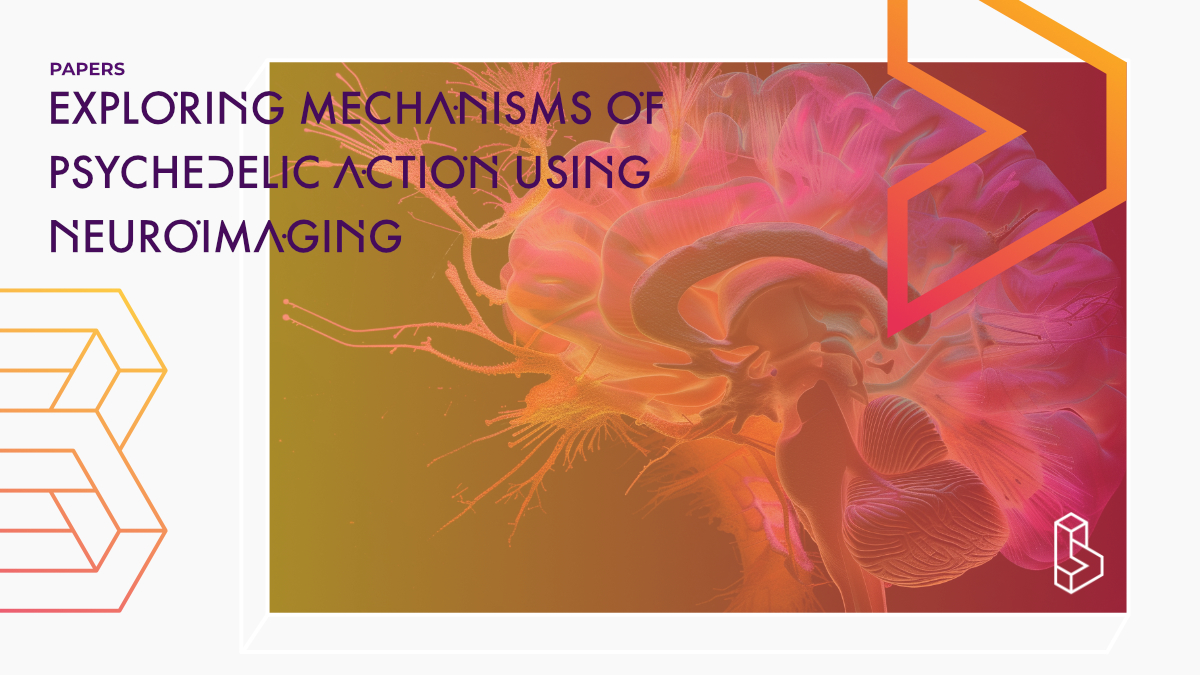This review (2024) discusses the pivotal role of neuroimaging in modern psychedelic research, providing insights into the acute and longer-term therapeutic effects of these substances. Evidence from fMRI, PET, and MEG/EEG studies informs computational models, offering a comprehensive understanding of the effects of psychedelics on human consciousness as well as supporting the advancement of psychedelic therapies.
Abstract of Exploring mechanisms of psychedelic action using neuroimaging
“Modern psychedelic research and clinical development is at a crucial inflection point, with great potential for the treatment of many mental illnesses demonstrated but significant questions that remain unresolved. Neuroimaging has been pivotal in the modern era of psychedelic research, providing crucial insights into the acute effects of these drugs that revealed translational, clinical potential. Here we review this evidence from functional magnetic resonance imaging, positron emission tomography and magnetoencephalography/electroencephalography studies and describe how these findings inform computational models of both the acute action of psychedelics and their longer-term therapeutic effects. This approach, based on multi-modal neuroimaging, provides a solid evidence base for these therapies as they move forwards, as well as a fuller understanding of the powerful effects of psychedelics on the phenomenology of human consciousness.”
Authors: David Erritzoe, Christopher Timmermann, Kate Godfrey, Pedro Castro-Rodrigues, Joseph Peill, Robin L. Carhart-Harris, David J. Nutt & Matthew B. Wall
Summary of Exploring mechanisms of psychedelic action using neuroimaging
Modern psychedelic research has reached a pivotal stage, presenting notable potential for treating mental illnesses while still facing unresolved questions. Neuroimaging techniques have been instrumental in understanding the effects of psychedelics, offering insights into their acute actions and long-term therapeutic impacts.
The history of psychedelic substances dates back centuries, with indigenous practices employing compounds such as DMT, ayahuasca, and mescaline for spiritual and medicinal purposes. Western scientific exploration began in the 1950s following the discovery of LSD’s psychoactive properties. Initial research reported therapeutic benefits, but the association of psychedelics with countercultural movements in the 1960s led to legal restrictions, halting scientific investigation for decades.
Recent advancements, often termed the ‘psychedelic renaissance,’ have renewed interest in these compounds. Key pharmacological discoveries, including the role of 5-HT2A receptor agonism, underpin their mechanisms. This paper explores modern neuroimaging methods to investigate the effects of psychedelics on the brain.
Neuroimaging in the Modern Psychedelic Era
Overview of Imaging Techniques
Find this paper
Exploring mechanisms of psychedelic action using neuroimaging
https://doi.org/10.1038/s44220-023-00172-3
Paywall | Google Scholar | Backup | 🕊
Cite this paper (APA)
Erritzoe, D., Timmermann, C., Godfrey, K., Castro-Rodrigues, P., Peill, J., Carhart-Harris, R. L., ... & Wall, M. B. (2024). Exploring mechanisms of psychedelic action using neuroimaging. Nature Mental Health, 2(2), 141-153.

